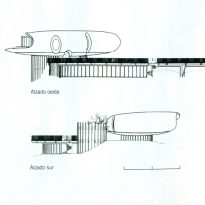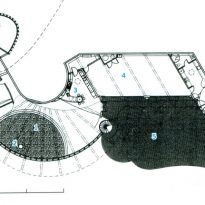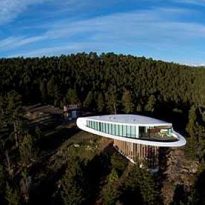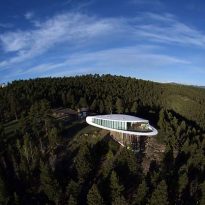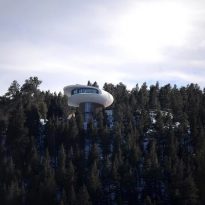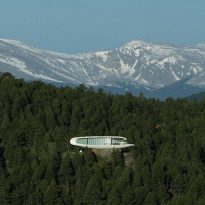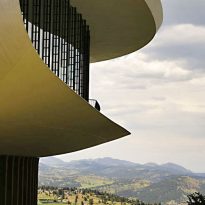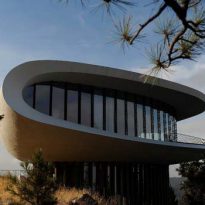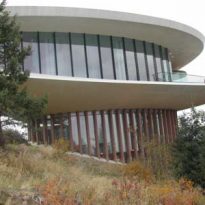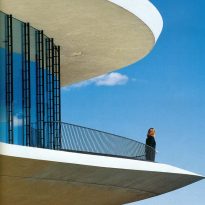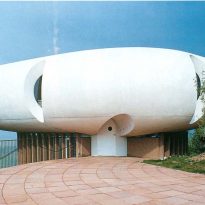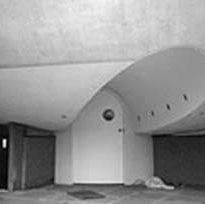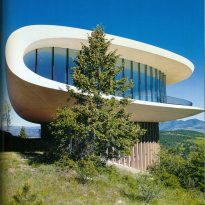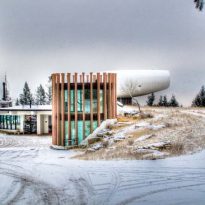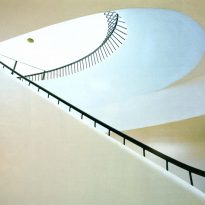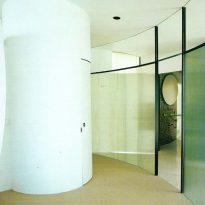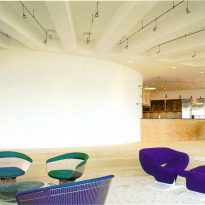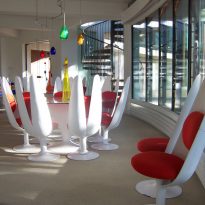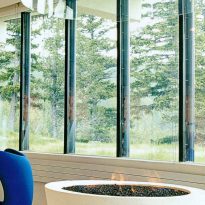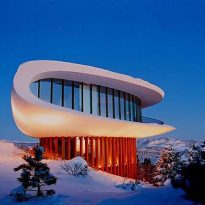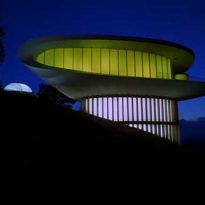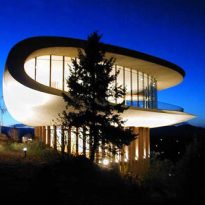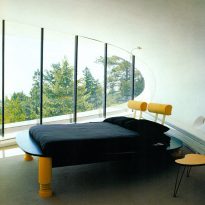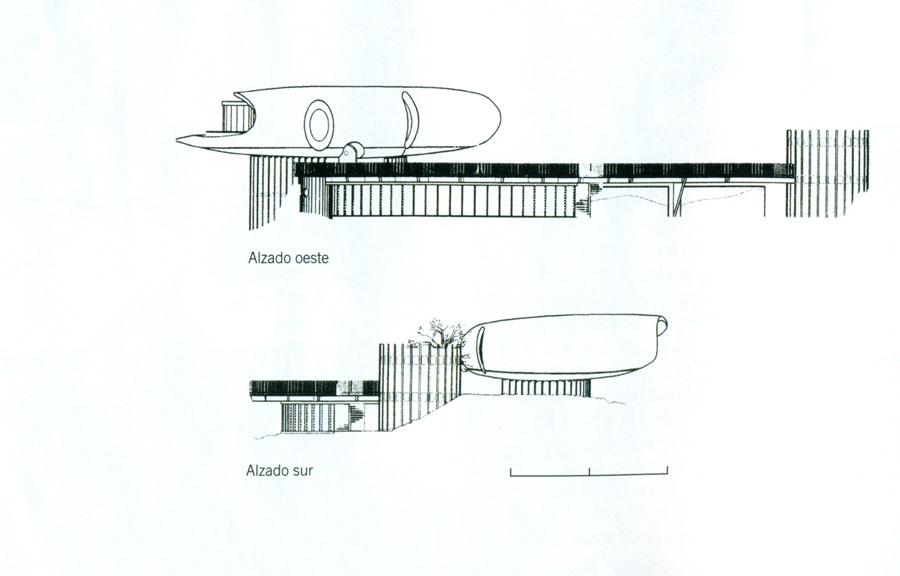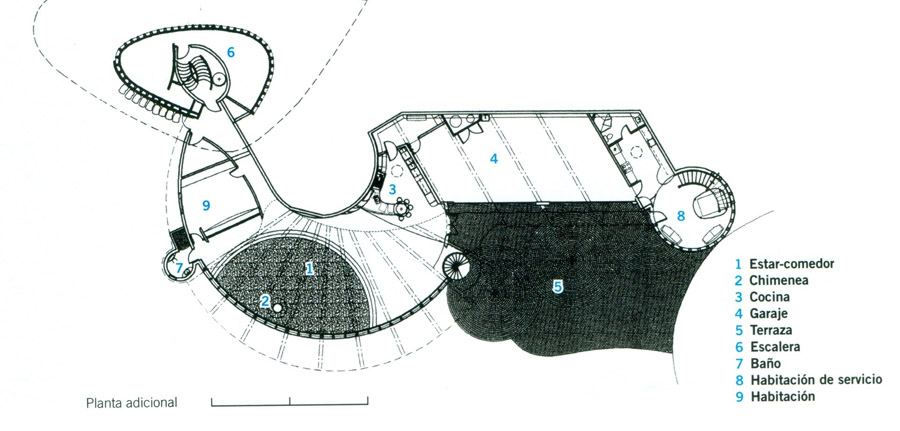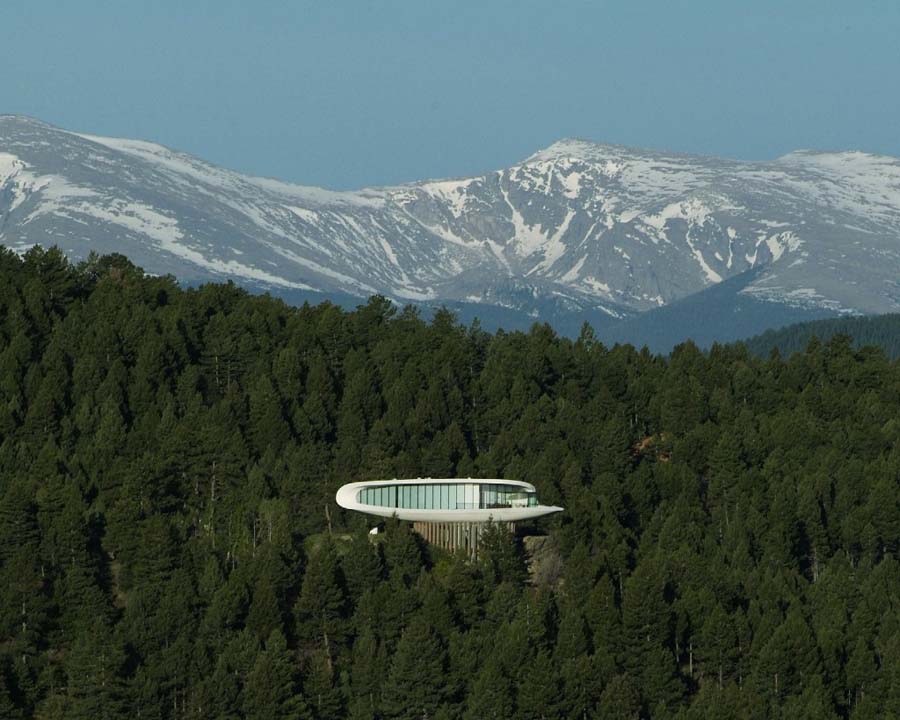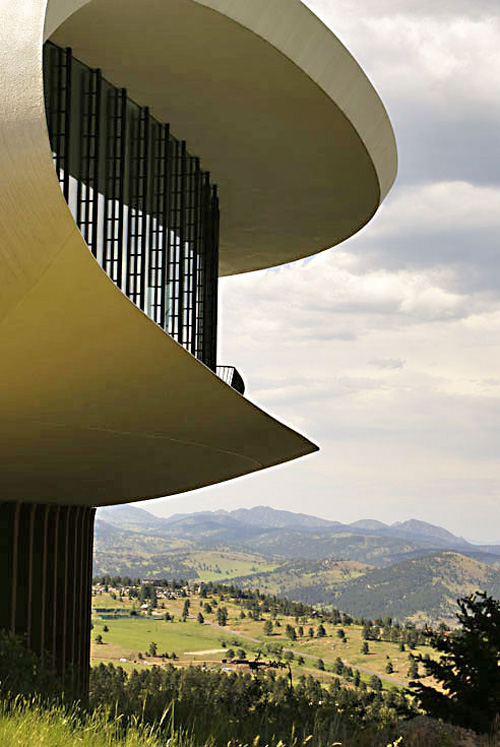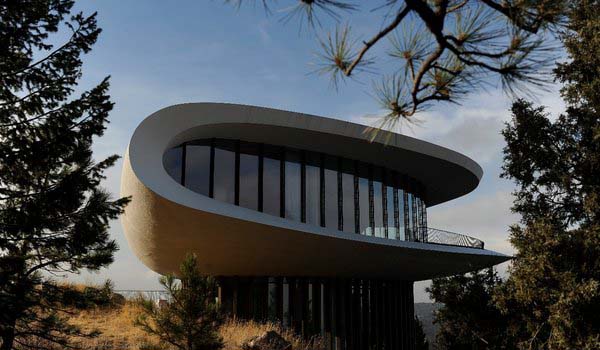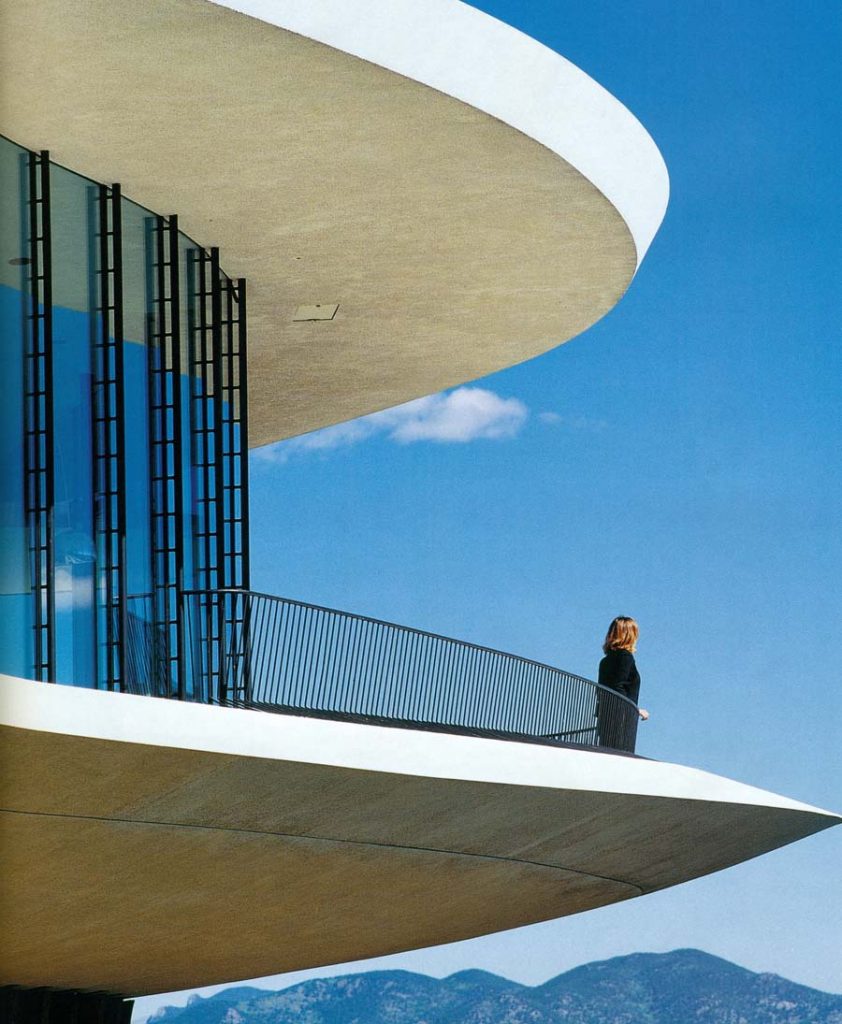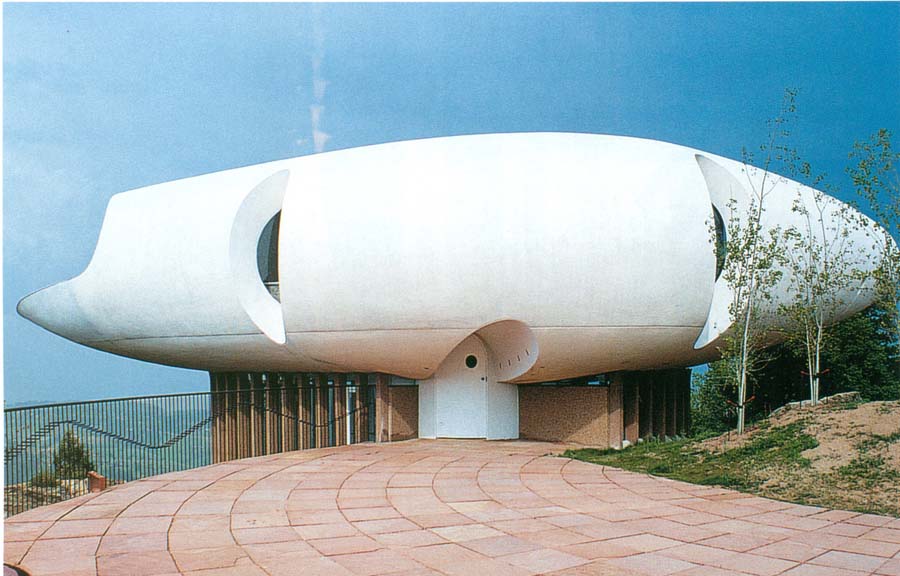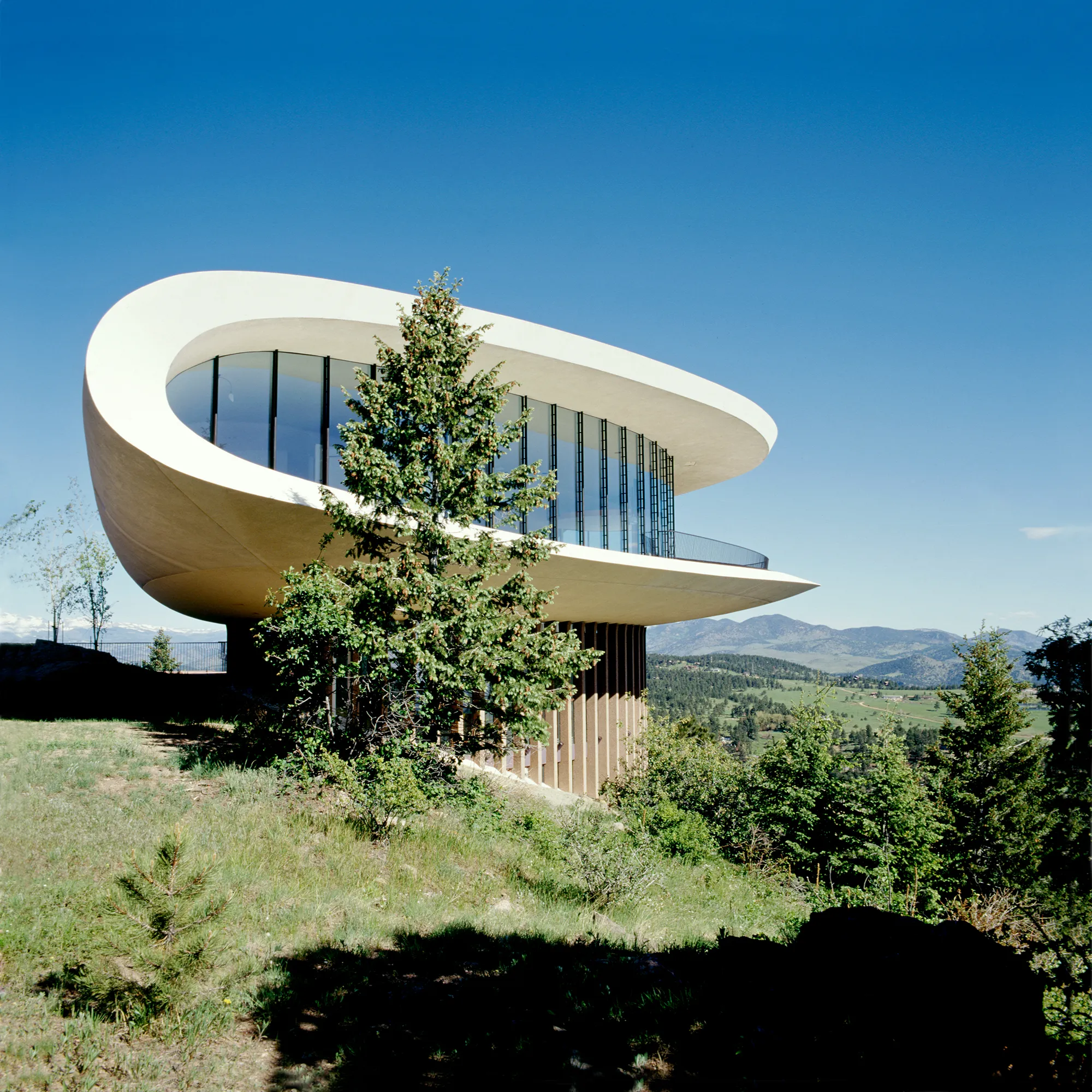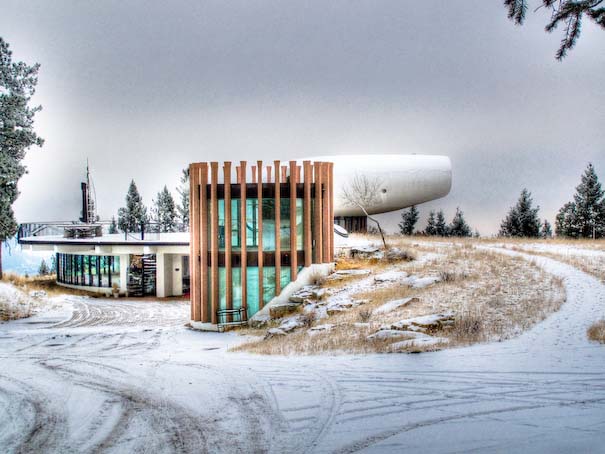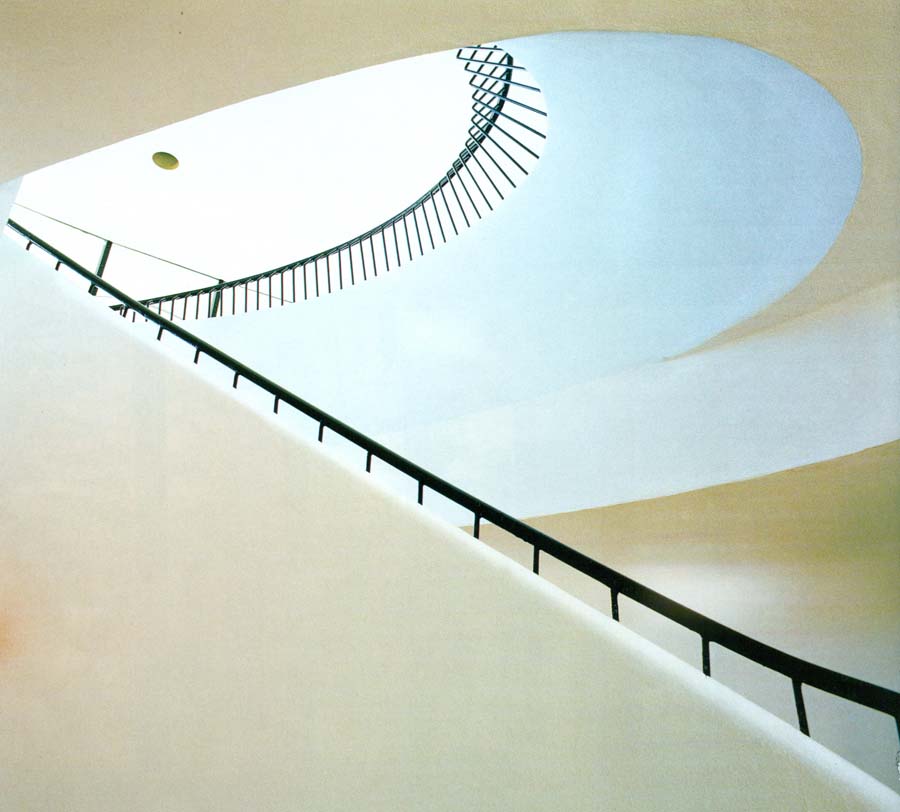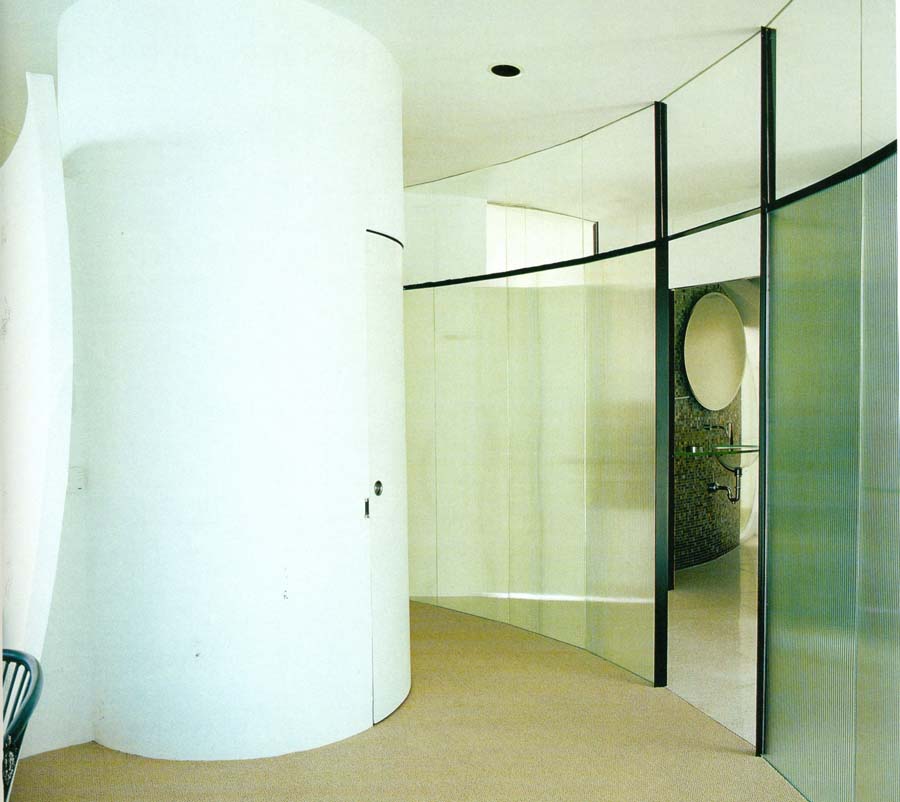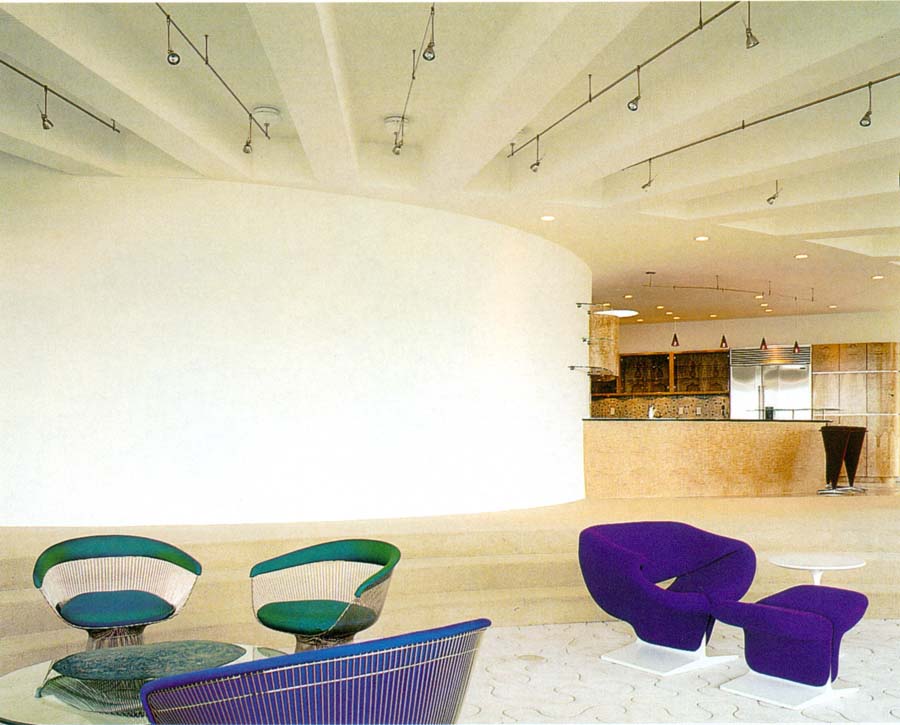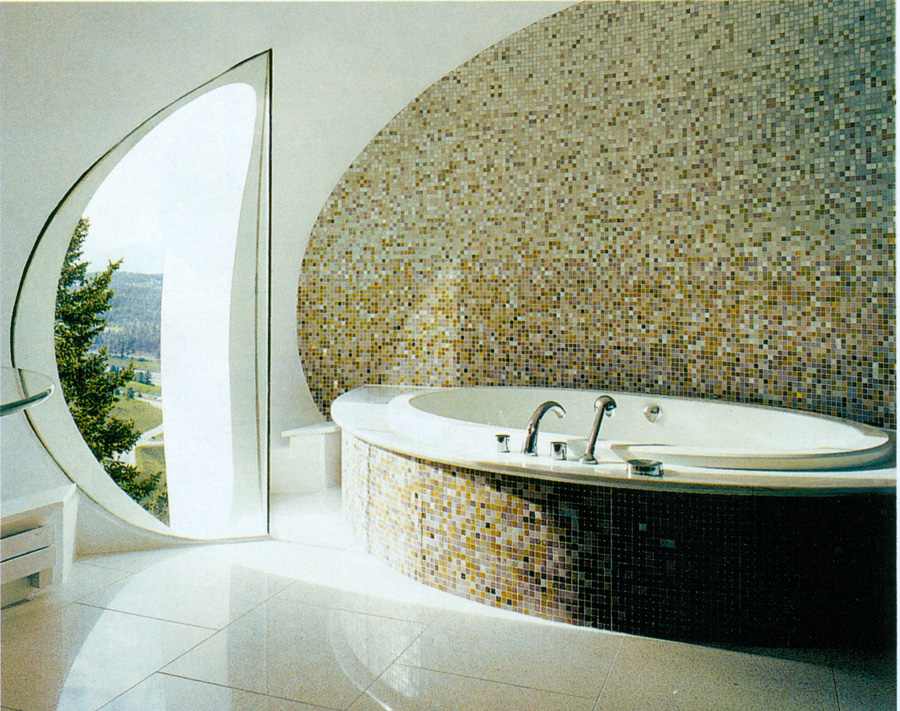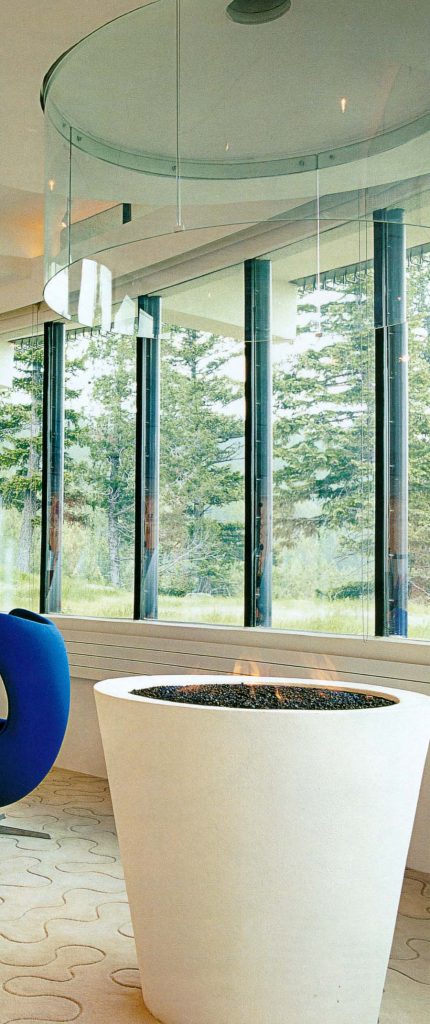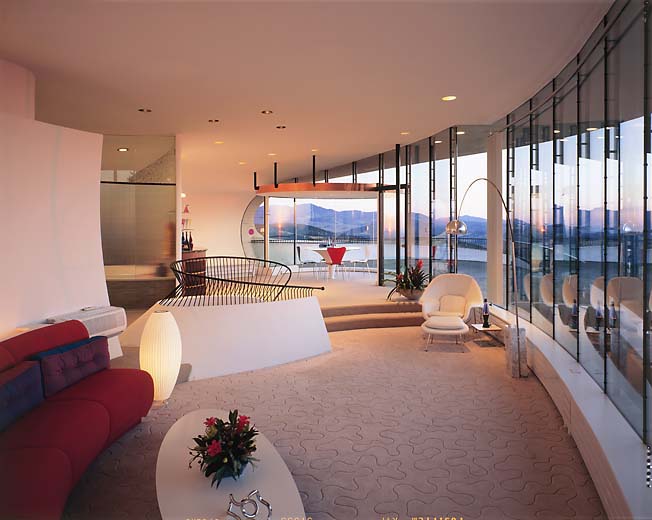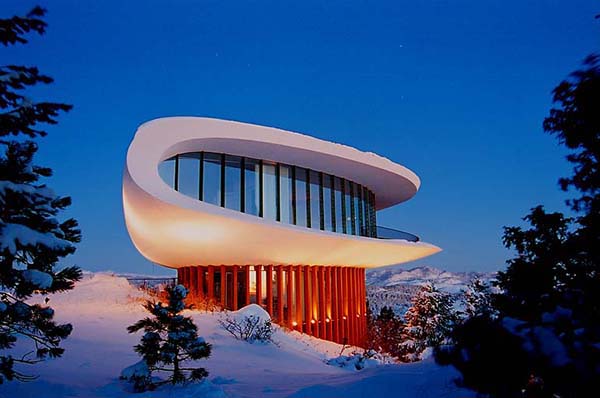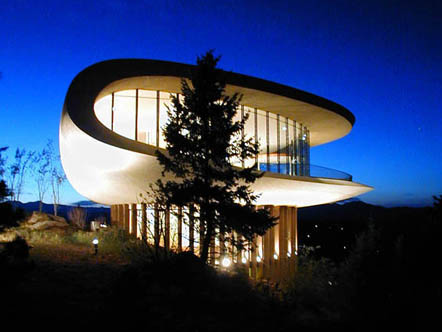Sculptured House in Denver

Introduction
“If people do not have angles then we should not live in boxes” (Charles Deaton)
Deaton designed this house to live with his family, was his only residential project, but never got to complete it in its entirety, especially on the inside, unable to get to be inhabited and being in a state semirruinoso. The architect was sold in 1993 but it was not until 1999 when it was acquired by millionaire John Huggins, who spent several million dollars on its restoration, the Sculptured House acquired its best. Huggins enlisted the help of architect Nicholas Antonopoulos and his wife, interior designer Charlee Deaton, Deaton’s daughter, for the restoration and expansion of the house.
As happened with other houses futuristic at the time, the Sheats House or House Arango architect John Lautner, its peculiar design not escape Hollywood producers, appearing in the sci-fi comedy by Woody Allen “The Sleeper” in 1973, which gave another name by which it is known “Sleeper House”
Despite reforms and gained fame after the movie, it was not until 2006 when it was sold again, when we finally meet the domestic function for which it was conceived by its author in 1963, as the new owner was the first he decided to live there until 2010 when he could not keep paying the mortgage and the house was foreclosed.
Location
Sculpture House is located 35 kilometers from Denver, in the American Midwest, 855 Visionary Trail near Golden Colorado, United States
It was built on the north side of Genesee, mountain 2400 feet high, overlooking the Continental Barrera, running through, among others, the states of Wyoming and Montana. The house is located about 300 meters on the main highway from the city to the Rocky Mountains, making it an icon of the city visible from quite a distance.
Concept
The house is an attempt to create a sculpture in which one can live. It differs greatly from the rectangular houses of the 60s. Its 700 square meters, 120 originally spread over three levels with unpredictable curves were designed primarily as a sculpture, plans to turn it into housing were later realized, hence the name Sculpted House or House Sculpture.
Spaces
Throughout the house, both in its original state and after enlargement, and including the new wing, curved parameters include both internally and externally.
Original Project
The original project of approximately 120 square meters, was developed on three floors, a gateway between the top floor and the first of 7 square meters, with 40 m2 ground floor and the first with 70m2
Reform
Ladder
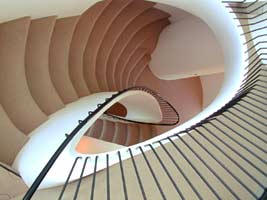
The staircase that connects the floors concave prominently in the house, its concrete steps seem pierced by water and wind. The steel railing was painted black. Through them the extension is accessed from the main floor up, where you will find the monumental terrace designed by Deaton.
Bedrooms
The lower and first floors, designed originally as an architect’s office and living painting of his wife and daughter, after the reform became bedrooms.
The master bedroom is a large room space whose characteristic is singled out by the concave shape of its component parameters, including a curved wall that separates white and being on the first floor of the most intimate bedroom and bathroom
Office
The office, with a circular ceiling suspended from the original, takes the place of an old glass revolving door, on the top floor.
Expansion
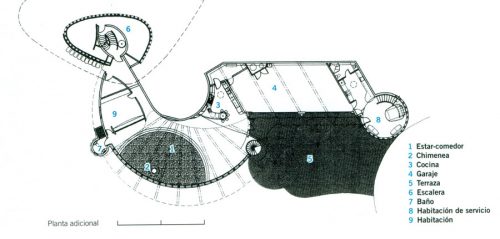
Espansion plan
After Antonopoulos reform came to occupy the house 700 square meters, the original plans were respected and added a new plant with 465 square meters, located between the bottom and the first, and its access to the terrace, in the western of the house.
Within this expansion included:
- Kitchen – With its modern design, is composed of a black granite bar with steel and wood front. The wet bar hangs from the ceiling and steel doors separating the pantry.
- Garage – The garage can accommodate four cars and an area of 100 square meters.
- Room – The circular room of 95 m2 divided into two floors and is connected to the upper terrace and the garden below the house. In this wing there is another room service.
- Bath – From the bath lift is accessed that is separate from this common area by a curved wall of translucent glass. A hatch, similar to that of the ships, gives natural light to the room and allows observing the landscape.
- Lounge and dining – This area with its 200 square meters and two levels, connected by stairs, occupies most of the new wing of the house, highlighting a large concave wall painted white. This room is dumped outside through large windows divided by pillars that continue visually steel studs on which the house sits, so it respects the original aesthetic. A fireplace stands in the center of the room, near the windows
Structure
In reference to the structure, reinforced concrete with steel studs, the architect in charge of the reform says…. “The Sculpture House is designed rigorously, ie, the formal structure is well thought out, its shape is not random, but your spirit is free, let your imagination. I think the geometry of this house suggests to all who see plenty of movement “… (Nicholas Antonopoulos)
Materials

The shell-shaped structure housing the housing is made of reinforced concrete and supported on steel columns.
Beneath the windows of the living room has installed a radiant heating and lighting was done with rows of halogen bulbs placed between the rafters.
The chimney on the inside is covered with black colored lava stone and stucco exterior in white with a circular glass bell placed in the ceiling.
The concave staircase that connects the floors are made of concrete and painted white also, as all parameters of the house, roofs, stairs, bathrooms, walls, exterior facade. The metal railing painted in dark color accentuates the concave design of the staircase. Glass plays a key role in the project, through the large window lounge and bedroom open the house to the outside. The new wing these crystals were replaced by energy panels. A translucent glass wall separates the interior of the spacious bathroom areas.
The bathroom walls were covered with small mosaic tiles in three colors as used on the floor terrazzo tile with a design that combines copper, blue and white.
The kitchen combines Italian terrazzo floor with black granite, steel and ash wood.
Video
